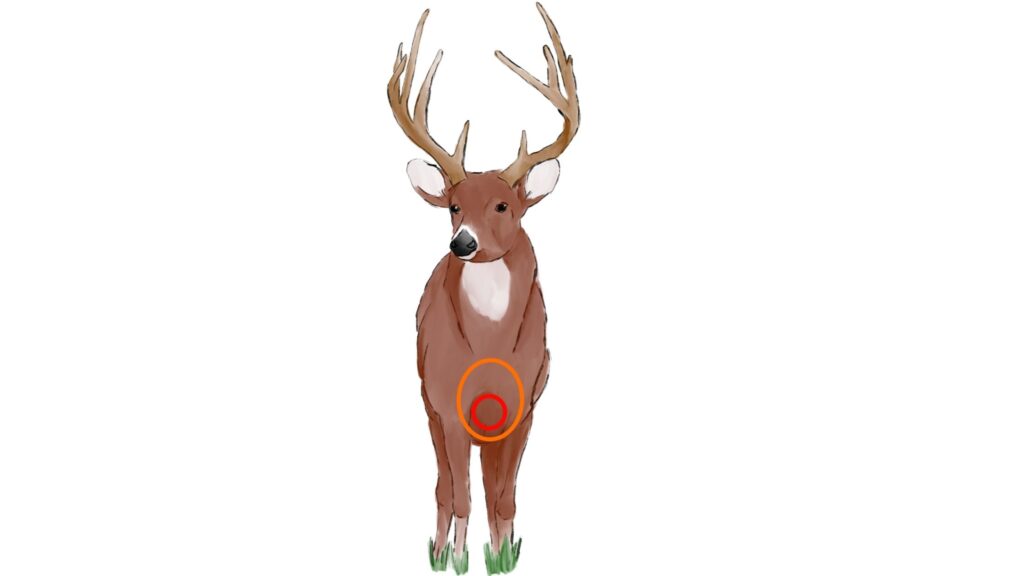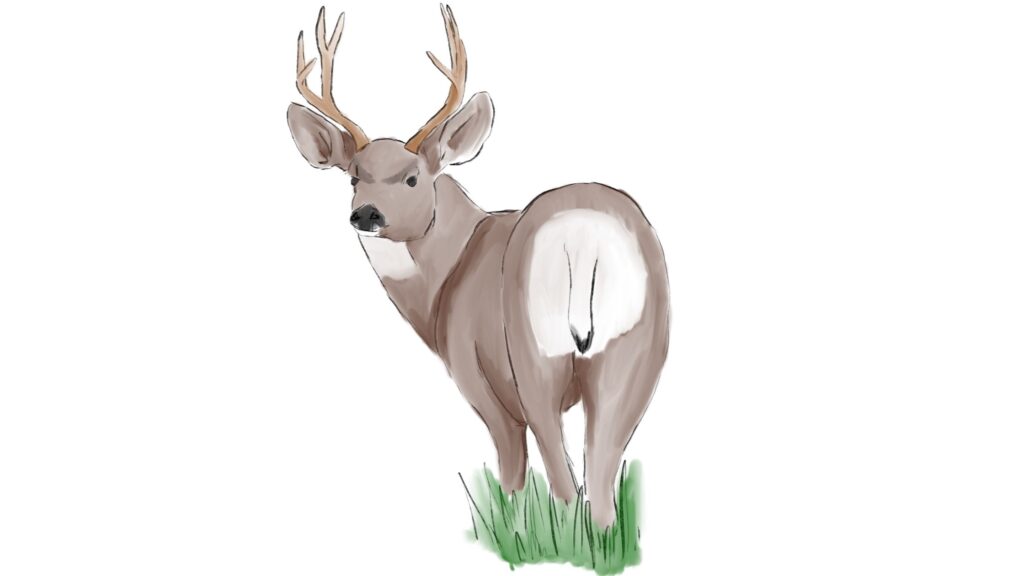You’ve decided to take up crossbow hunting for deer. You’ve got yourself set up with the perfect crossbow, you’ve sighted it in, and practiced target shooting. Now it’s time to hunt.
So where do you aim when the moment of truth comes? Well, that depends on the deer’s position relative to your stand.
Below, we will discuss shot placement techniques for the various scenarios you may find yourself in.
Crossbow Fundamentals
Crossbows are gaining immense popularity amongst hunters of all ages. Once only legally used by older hunters or hunters with health issues, many states have removed those restrictions and now anyone can hunt with a crossbow.
Crossbows differ from traditional recurve and compound bows in the fact that they are pre-cocked, usually are fitted with a scope, and you pull a trigger like a gun rather than release with your fingers.
The crossbow attains a bit more power and range than a traditional bow, allowing the hunter a little more peace of mind when shooting at a distance.
In addition to this, the assistance of optics and ability to handle as easily as a firearm makes it a good choice for deer hunting.
Broadside Shot

Broadside is the most textbook shot there is in hunting, as well as the most desirable. Broadside is what happens when either side of the deer is facing directly toward the hunter and no angle is needed to make an ethical shot.
This scenario comes most often when the hunter is set up parallel to a heavily traveled deer trail or travel corridor.
This shot offers a clear path to both lungs and the heart, which are what are considered the deer’s major vital organs, that all hunters should learn to aim for.
When preparing a shot at a broadside deer from the ground, you’ll want to aim center lower center mass about an inch or two behind the front shoulder.
This gives you some leeway if the deer jumps the string (which happens a little more often as crossbows are generally louder than compound bows) and drops down causing the bolt to go high or you mis-judge the distance and the bolt is a little low.
When shooting out of a tree stand, you’ll need to compensate for any angle created by being above the deer and consider where the arrow will not only hit the deer, but also where it will exit.
The closer the deer is to you in the tree stand, the greater the angle, and the higher on the deer’s body you’ll need to aim.
Whether you’re on the ground or in a tree stand, the orientation of the shot should remain the same for a broadside shot—right behind the front shoulder.
Quartering Away Shot

A close second to the broadside shot as far as favorability goes among hunters, is the quartering away shot.
The quartering away shot comes when the deer is angling away from the hunter, with his rear-end nearest the hunter, and his head facing away. This shot offers a solid path to both lungs, the liver, and potentially the heart.
When shooting this shot at a deer from the ground, you’re going to want to again compensate for the angle of the deer, but this time it’s a horizontal angle.
The hunter should aim the crosshairs further back on the body of the deer for the point of impact of the bolt, with the distance from the shoulder blade depending on how sharp the deer is quartering away from the hunter.
A well-placed quartering away shot should make impact with the deer somewhere in the back third of the rib-cage area—depending on the angle.
The shot will then travel through vitals and exit near the front of the deer’s shoulder.
Keep in mind, the deer can be at an angle that is too wide to make this an ethical shot. Hunters need to use discretion when making a shot selection in order to make an ethical kill.
If the angle is too far, you risk only hitting one lung, making a recovery of the deer much more difficult.
Overall, this is one of the best shots a hunter can be presented with. Fully exposed vitals allow a good shot to knock down a deer relatively quickly, putting meat in the freezer.
Quartering To Shot

The quartering to shot is a shot that should be executed perfectly if a hunter decides to take it. Luckily, a crossbow’s accuracy and ease of use makes this shot a bit easier to complete successfully.
Many hunters will elect to pass a deer that is quartering to, in hopes of getting a better look at it either broadside or quartering away at some point during the encounter.
The quarter to shot is the inverse of the quartering away shot. The deer is coming toward the hunter at angle in which its head is closest to the hunter with his rear further away.
The quartering to shot does not offer a very clear path to any of the vitals due to the deer’s shoulder blade blocking most of the lungs and heart. It’s a shot that should only be made by hunters who are confident in their crossbow skills.
This shot requires the hunter to aim at the front of the deer, just inside of the shoulder blade. This places the bolt at an impact point that is inside of the shoulder, which will penetrate the front portion of the first lung and exit at the back portion of the second lung.
Out of a tree stand, this shot is extremely difficult in that the hunter needs to adjust his aim point to the top front of the shoulder, near the base of the neck where there is very little room for error.
A poorly placed shot on a deer that is quartering to will result in a long tracking job and expiration of the animal could possibly take a long time, or even worse, the deer may never be recovered.
If you hit the shoulder blade, there is a chance no vitals will even be struck, and the deer will be wounded.
Brisket Shot

The brisket shot is another shot that is less than ideal for crossbow hunters. This shot should also be taken into extreme consideration before executing it. This is another shot that many hunters would elect to pass.
The brisket shot is a shot at a deer that is walking directly at a hunter. The difficulty is high because not only the deer looking toward the hunter, there is limited access to the vitals.
The only vitals that are accessible to the hunter is the heart, and the very inside of either lung. This shot risks missing altogether and badly wounding the animal.
This shot should only be executed when hunting from the ground as when the hunter is elevated in a tree stand the vertical angle is too steep to actually hit any of the deer’s vital organs.
When taking the brisket shot, the hunter should aim to either side below the “ball” on the deer’s chest toward the center of the deer’s brisket. This shot will enter and impact either the heart, lungs, or some of both.
The bolt will likely remain in the animal, making blood trailing the animal difficult. This can be problematic when attempting to recover your deer.
Much like the quartering to shot, this shot should be avoided if possible. The risk of wounding the deer simply is not worth it, especially if you’re new to the sport of crossbow hunting.
Hunters are much better off waiting until the deer presents a broadside or quartering away shot.
When NOT to Shoot

So far, we’ve discussed the options that crossbow hunters have to make a kill shot on a deer, but we would be remiss to not discuss a few scenarios in which the hunter should not shoot.
Aside from the riskier shots like the quartering to shot and brisket shot, there are several other situations that deer should always be passed until a better opportunity comes up.
One of those situations is when the deer is facing directly away from the hunter offering only the rear end. There is no ethical way to take this shot no matter what weapon you’re using.
It offers no vitals, and the shot will only result in a long tracking job and likely a lost animal.
Another situation a hunter might run into is when the animal might be broadside or quartering away, but there are large obstructions like trees or brush blocking or partially blocking the vitals.
A crossbow bolt easily deflects off of this type of foliage and this can result in an errant shot that will miss, or even worse, wound the deer.
Finally, a hunter must know the effective range of their crossbow. Even a perfectly broadside deer will be difficult or impossible to harvest if the deer is outside of the weapon’s range.
Most hunters should not consider taking a shot on a deer that is further out than 45 to 50 yards. There are simply too many things that can go wrong at a longer distance.
You can hit limbs or grass, or a strong gust of wind can even move your crossbow bolt several feet left or right, resulting in a miss.
The ideal shot on a deer should be somewhere between 10 and 30 yards for maximum effectiveness and knockdown power with the crossbow.
Conclusion
Hunting with a crossbow is a great way to extend the deer season. Most places offer long crossbow seasons that extend from September all the way through January.
Knowing what to look for when the moment of truth comes will give a hunter peace of mind and will ensure that they can make the most of the deer encounters they have each season.
When that time comes, take a deep breath, remain calm and take a good shot. You’ll be rewarded with a freezer full of venison and hopefully a trophy for your wall.















































